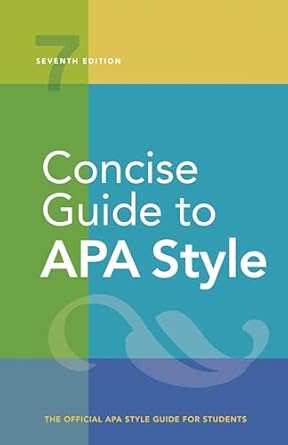[toc]
grammar usage guide write clearly and effectively
Concise Guide to APA Style: 7th Edition (OFFICIAL)
Page 65 Review
Grammar and Usage: A Deep Dive into Clarity and Precision
Clear and precise communication is paramount in academic writing.
The excerpt from the ebook on grammar and usage emphasizes the importance of avoiding ambiguity and ensuring readers understand the intended message.
This commentary will delve into the key points raised in the text, providing context and elaborating on their significance.
Introduction: Setting the Stage for Effective Communication
The excerpt begins by addressing the subtle yet crucial nuances of phrasing.
It cautions against overuse of phrases like “this section addresses” or “the chapter focuses on,” suggesting a more dynamic and engaging approach.
The text states: “‘this section addresses’ or ‘the chapter focuses on’ as well as ‘in this section we address’ or ‘in this chapter, we focus on’ (see Section 4.3 for comma use with introductory phrases).” This highlights the importance of varying sentence structure to maintain reader interest and avoid monotony.
Similarly, the excerpt advises on describing research results, suggesting phrases like “the results suggest,” “the research contributes,” or “the study found.” It also highlights “the data provide“.
These recommendations encourage direct and concise language, avoiding overly complex or convoluted phrasing.
The emphasis here is on clarity, ensuring the reader grasps the key findings without unnecessary mental gymnastics.
Anthropomorphism: Navigating Ambiguity
The text acknowledges the challenges in defining anthropomorphism and the potential for disagreement among scholars.
It asserts: “Determining what constitutes anthropomorphism can be challenging, and even distinguished scholars may disagree.
In ambiguous cases, we recommend that you keep the principle of clear communication at the forefront of your word choice and sentence structure.” This reinforces the central theme of prioritizing clear communication, even in subjective or ambiguous situations.
When faced with uncertainty, the guiding principle should be to choose language and structure that minimize the risk of misinterpretation.
The Impact of Grammar on Clarity
The excerpt makes a powerful statement about the impact of grammar on communication.
It emphasizes: “Incorrect grammar and careless construction of sentences distract readers, introduce ambiguity, and impede clear communication.” This underscores the critical role of proper grammar and sentence construction in ensuring effective communication.
Grammatical errors not only detract from the reader’s experience but also compromise the clarity and accuracy of the message.
The excerpt presents the section’s goal, stating: “The examples in this section represent common grammar and usage errors that often appear in papers submitted to academic instructors.” This clearly outlines the section’s purpose: to identify and address common grammatical errors that students make in their academic writing.
Verb Tense: Maintaining Consistency
The excerpt delves into the importance of verb tense consistency.
It elucidates that: “Verbs are vigorous, direct communicators.
The past tense is appropriate when expressing an action or a condition that occurred at a specific, definite time in the past, such as when discussing another researcher’s work.
The present perfect tense is appropriate to express a past action or condition that did not occur at a specific, definite time or to describe an action beginning in the past and continuing to the present.” This illustrates the crucial rule of appropriate verb tense usage.
It specifically mentions using the past tense to describe another researcher’s work and the present perfect tense for actions that began in the past and continue to the present.
Furthermore, the text emphasizes the importance of avoiding unnecessary shifts in verb tense.
The excerpt warns: “Use verb tenses consistently, and stay within the chosen tense to ensure smooth expression.
Sudden, unnecessary shifts in verb tense in the same paragraph or in adjacent paragraphs may confuse readers.
Use the verb tenses shown in Table 2.1 to report information in various parts of your paper.” This highlights the potential for confusion caused by inconsistent verb tense usage and urges writers to maintain a consistent tense throughout their writing.
Active and Passive Voice: Understanding the Relationship
The final section of the excerpt addresses the use of active and passive voice.
The text defines voice, explaining: “Voice describes the relationship between a verb and the subject and object associated with it.
In the active voice, the subject of a sentence is presented first, followed by the verb and then the object of the verb (e.g., ‘students completed surveys’).
In the passive voice, the object of the verb is presented first, followed by the verb (usually a form of ‘to be’ + past participle + the word ‘by’) and then the subject last (e.g., ‘surveys were completed by students’); sometimes, the subject is omitted altogether, resulting in confusion about who is performing the action.” This clear explanation outlines the difference between active and passive voice and their effect on sentence structure.
It also addresses how omitting the subject in passive voice can lead to confusion.
Conclusion: Striving for Clarity
In conclusion, the excerpt emphasizes the need for clear and precise language in academic writing.
By avoiding ambiguous phrases, maintaining verb tense consistency, and understanding the difference between active and passive voice, writers can significantly improve the clarity and effectiveness of their communication.
The principles outlined in this excerpt are essential for any writer striving to produce high-quality, easily understood academic work.
Buy full ebook for only $18: https://www.lulu.com/shop/american-psychological-association/concise-guide-to-apa-style-7th-edition-official/ebook/product-rmzpq54.html?page=1&pageSize=4


Leave a Reply